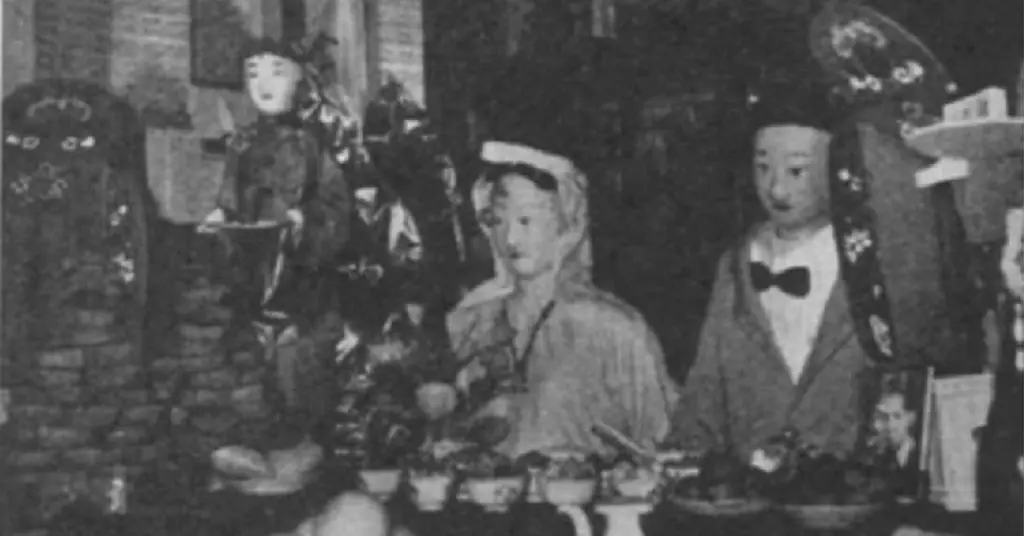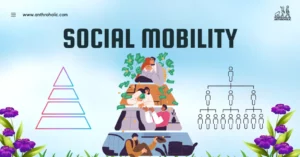AI Answer Evaluation Platform Live Now. Try Free Answer Evaluation Now
Ghost Marriage
What is Ghost Marriage?
Ghost marriage is a rare type of posthumous marriage between a living and a deceased person or a ghost. In some societies, marriage can even occur between two deceased persons [3]. A ghost marriage typically occurs when a man died before he had the chance to continue his lineage. In such a case, the ghost of the man would have a marriage or more of a spiritual union with a woman, who would then bear his children [2]. Ghost marriages were customarily performed in the interest of a man who either remained unmarried or died without a son to pass on his name. [1]

Examples of Societies that practice Ghost Marriage
The Neur of Africa
The Neur is a pastoral society in Southern Sudan that was thoroughly studied by English anthropologist E. E. Evans-Pritchard. In a Nuer society, if a man passes away without leaving an heir, one of his brother’s wives will marry the ghost of the deceased man, and the children they bear will be the deceased brother’s heirs. Additionally, a deceased person’s cattle is passed on to his son or his brother, in cases where he doesn’t have a son. However, this cattle is supposed to be used as a form of bridewealth for acquiring a new bride for the ghost of the deceased person [3]
In other variations of ghost marriage, a childless kinswoman may assume the role of a man and take a wife. In this situation, all children born to the wife will be regarded as the “children of the ghost” [3].
The Atuot of Africa
The Atuot is a pastoral society in Southern Sudan that was studied by anthropologist John W. Burton. [3]. The Atuots practice a form of ghost marriage which is known as cuong [1]. Identical to the Nuer, the Atuot performed a ghost marriage for a man who died unmarried or without an heir, and any children the woman might have were treated as the deceased man’s legal heirs [3]. Burton also points out that if a man has a living daughter, the daughter might assume a male role and subsequently have a wife to leave the deceased man a future heir. The children born from this form of union, are called “the children of the ghost” [1] Burton also notes that children born out of this marriage face some stigma as they are frequently referred to as “orphans’ ‘. [3].
According to Burton, a ghost marriage can be defined as a marriage union that takes place for the exchange of bridewealth cattle between the kin of the deceased person and the bride [1]. However, the Atuot themselves do not acknowledge the economic benefit of the exchange of cattle [3]. According to them, a ghost marriage simply serves to preserve the lineage of the deceased man [1].
The Singaporean Chinese
Yin Ch’u (Ts’u) [Yinqu] or ghost marriage is a practice that belongs to the Singaporean Chinese [4], which was studied by Marjorie Topley. The practice is common among the Cantonese, who also happen to be more open-minded about it. This occurs during a ceremony or series of ceremonies where two deceased people, or, less frequently, a living person and a deceased person, are wed. Whether the deceased kin was a man or a woman, these marriages typically take place in the home of the family, though occasionally a temple is used. Topley notes the following reasons why a ghost marriage takes place among the Chinese:
If a family is successful in finding a living wife for their unmarried deceased son, the family can acquire a grandson to ensure the continuity of the lineage [4], as well as a living daughter-in-law who can assist in household duties [3].
A Chinese custom states that the unhappy spirit of a deceased man may bring misfortunes to his brothers, regardless of their marital status. In such cases, a ghost marriage may help appease the spirit. Additionally, in Chinese culture, a younger brother should not marry before his older brother. Thus a family may arrange a ghost marriage to allow a younger brother to marry without incurring the anger of the departed brother’s spirit [4]
Ghost marriages among the Singaporean Chinese also helps strengthen familial bonds [4]. Topley observed that while ghost marriages to create social links were significantly more widespread in the past, he was unable to locate any examples of them at the time he conducted his study [3].
The Japanese
Unlike the other instances of ghost marriage mentioned before, the Japanese practice takes a completely distinct shape. The spirit marries a doll rather than a living person. These dolls are referred to as “bride dolls”, however, there are also “groom dolls” that can be married to the spirits of departed women. In such unions, the living spouse was typically compensated financially. While there is a cultural concept that if a departed person’s spirit develops overly connected to a live person, the spirit may decide to call that living person’s soul into the spirit realm, the prospective bride deemed the cash reward extremely valuable. Additionally, such unions also served as a coping mechanism for the family and kin of the deceased, since it allowed for an exchange between the living and the dead. Offering a bride also attempts to comfort the deceased’s soul and guards against the spirit growing hostile of the living and inflicting disease and bad luck on their living kin [3].
The Greece
The idea of ghost marriage seems to be quite close to an old Greek custom called epikleros. During this type of marriage, a relative of the deceased man would hold in for him as the provisional owner of his assets until the woman who was married to his ghost gave birth to a son who would serve as his successor [3].
References
[1] Burton, John W. “Ghost Marriage and the Cattle Trade among the Atuot of Southern Sudan.” Africa: Journal of the International African Institute, vol. 48, no. 4, 1978, pp. 398–405. JSTOR, https://doi.org/10.2307/1158804. Accessed 18 Feb. 2023.
[2] Levirate and Sororate. (n.d.). https://laulima.hawaii.edu/access/content/user/millerg/ANTH_200/A200Unit2/LevirateSororate.html
[3] Schwartze, L. J. (2010). Grave Vows: A Cross-Cultural Examination of the Varying forms of Ghost Marriage among Five Societies. Nebraska Anthropologist. https://digitalcommons.unl.edu/cgi/viewcontent.cgi?article=1059&context=nebanthro
[4] Topley, Marjorie. “Ghost Marriages among the Singapore Chinese.” Cantonese Society in Hong Kong and Singapore (2011): 97- 100.https://www.academia.edu/49501210/Ghost_Marriages_among_the_Singapore_Chinese




